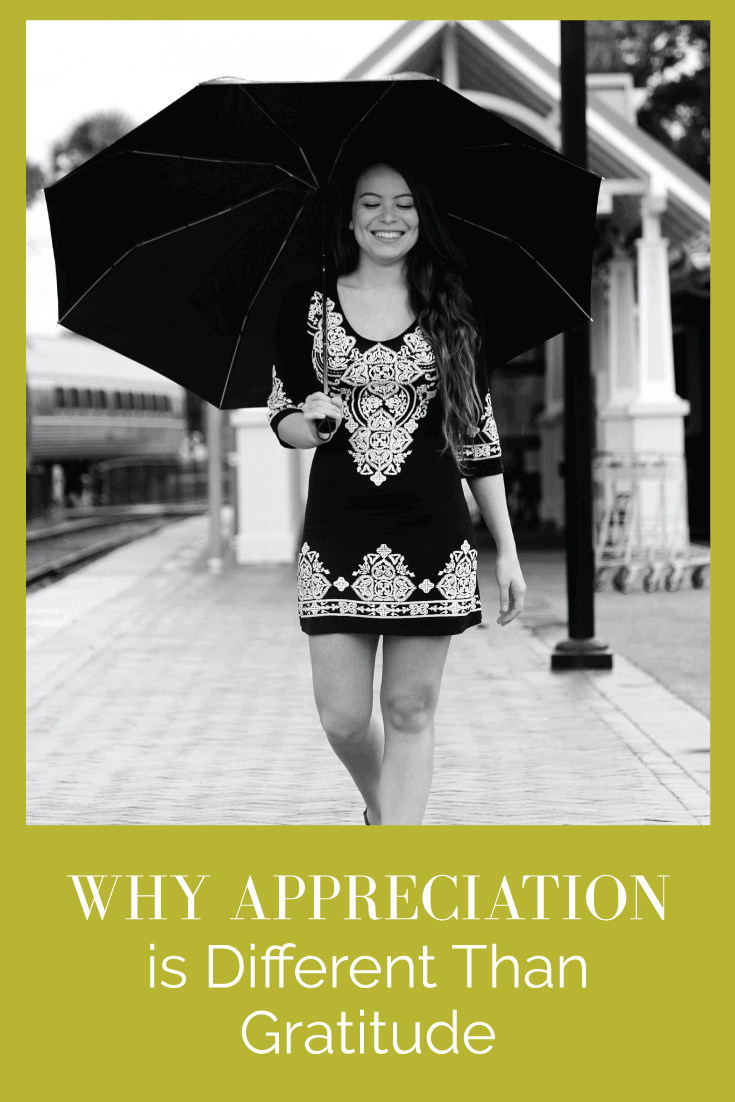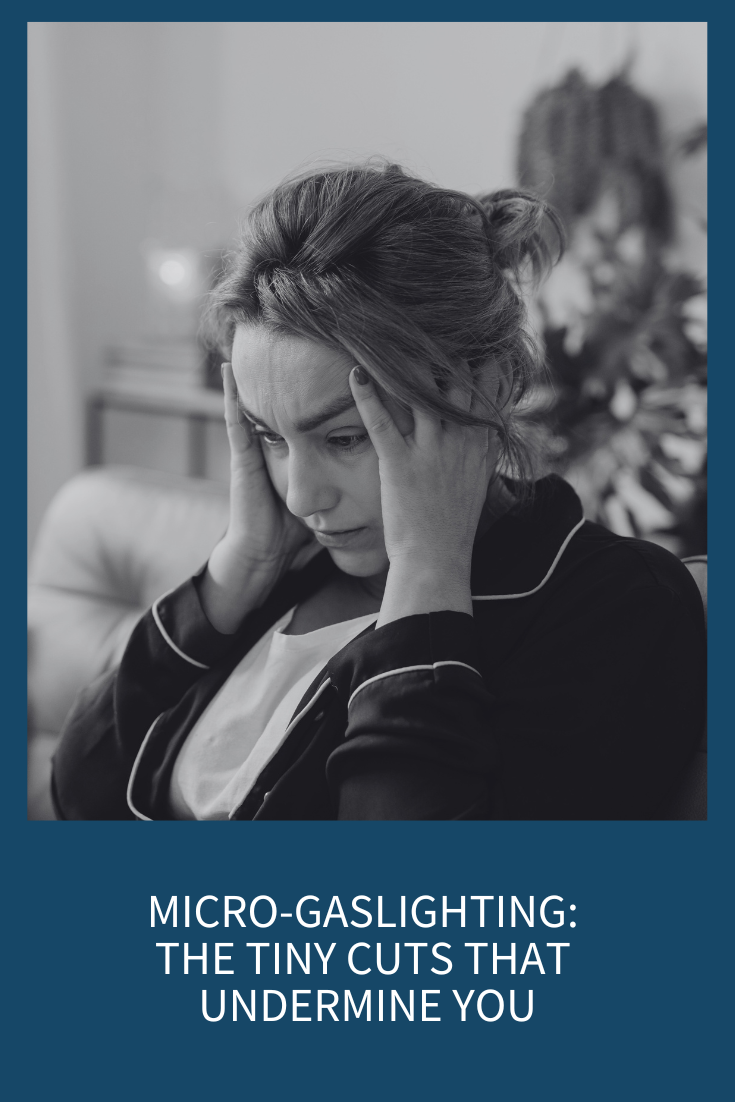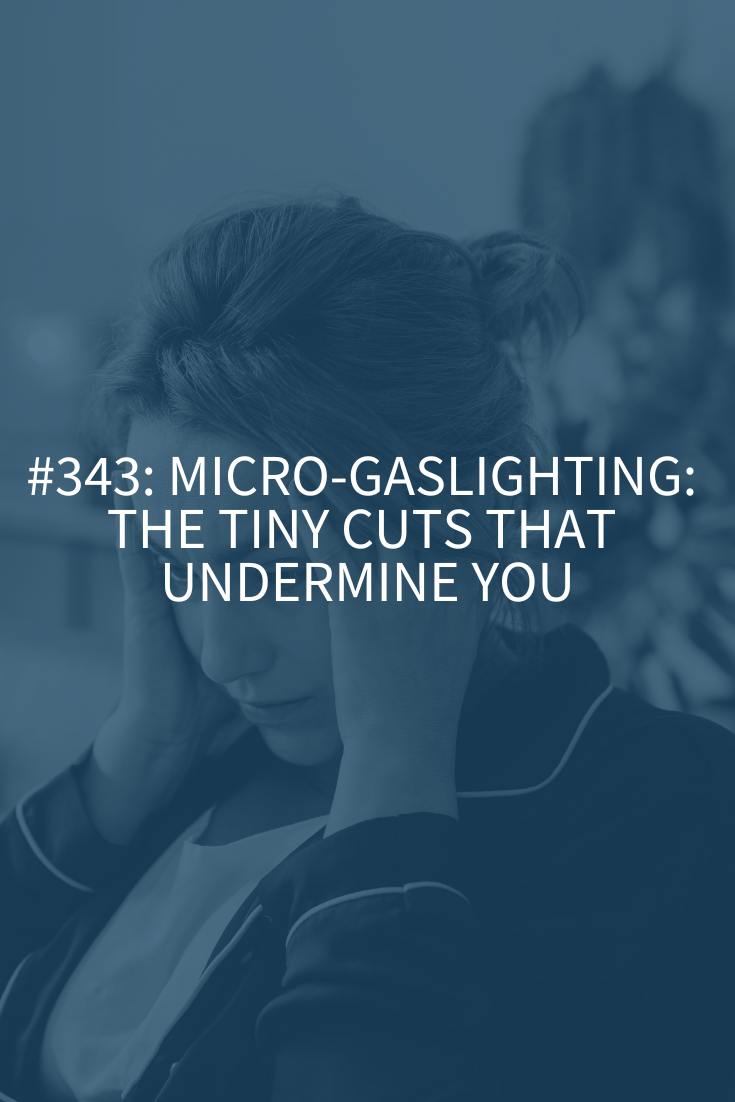
I’ve been noticing for a while now that people use the terms gratitude and appreciation interchangeably and they’re not interchangeable. They have two separate meanings and two distinct ways they show up in a fulfilled, happy, balanced life.
Today I’m going to break down the differences, and I’m going to share my top tool to practice appreciation in your life. Next week we’ll talk about all things gratitude, so make sure you check back in!
Appreciation
What the heck is appreciation? The simple definition is that when you appreciate something, you take it off of autopilot and bring your focus into the immediate, here and now, with full sensory awareness.
So, I might be writing up this blog post and realize I’m feeling a little hungry. I grab a handful of almonds and eat them as I finish editing (this is more common than you know since creating makes me hungry – OK, everything makes me hungry, but I digress). Normally I do this on autopilot without much thought. I taste the nuts maybe for a moment and some distant part of my brain is cataloguing what’s happening but it’s mostly all going on automatically.
However sometimes I stop, stay in my moment, and I appreciate those almonds. I notice the crunch, the salt, and how good they taste. I might also appreciate that I have almonds at the ready in my office so I can eat when I’m hungry (I actually have a lot of food available in my desk drawers – in between those client files are lots of goodies, but I digress!).
I’m appreciating those almonds because I’m off autopilot and, in the moment, noticing them.
When you appreciate something, it’s like you’re seeing it with new eyes.
Appreciation is very mindful; it’s all here and now. If you walk out your front door and notice what a beautiful day it is, you’ll see things differently. You’ll filter some things out and other things in. You might notice how great your front yard looks (and not notice that the weeds weren’t fully pulled out of the flower bed next to the house). It’s a state of mind where you see the same old things but in a fresh, new way. You take them in and notice them.
In the end, appreciation is being FULLY present in a moment with something and seeing it in a way you might not have seen it previously.
Gratitude
Feeling grateful is different. It’s not so here-and-now focused as much as a broader view or feeling.
The real difference is that when you feel grateful there’s actually a feeling (big or small) of some level of tension or struggle. Gratitude, at its very root, has some sense of comparison to something else. You might be grateful that you have such a wonderful partner after seeing another couple treat each other poorly. Or you might be worried about money. So, you might be grateful to have a beautiful home and “things” because you want to be grateful for what you do have.
If you’re upset with your partner, you might focus on what you’re grateful for in your relationship. Doing that is purposefully trying to overcome this negative thing you’re experiencing, and there’s the big difference.
I had a spiritual teacher many years ago who talked about how gratitude and appreciation have different vibrational levels. She talked about how appreciation is a lighter, easier vibration and that gratitude was a little heavier because of this underpinning of tension.
I’d like you to stop right now and think about that. Notice how gratitude feels when you’re feeling grateful for something and notice how it feels when you’re in a moment appreciating the sunshine on your face.
Practicing both appreciation and gratitude is important for a consistently fulfilled and satisfying life. Next week we’ll tackle all things gratitude. In the meantime, here’s my top tip to start having more appreciation in your life.
TIP: Thin Slice Your Life
“Thin slicing” is all about being in the here and now in your day-to-day life and purposefully noticing the taken-for-granted moments in your day, however short or small they may be.
This idea of thin slicing was created by Chade-Meng Tan and explained in his book Joy on Demand. I’ve been a huge fan of Tan for years. He’s best known for being former employee 107 at Google where he started giving mindfulness classes to his coworkers to help them manage stress. His groundbreaking work combining attention training and emotional intelligence can be found in his previous book, Search Inside Yourself. (This book changed the way I work with both organizations and individuals, by the way, and I highly recommend it also).
I love Tan’s work because he combines excellent research from different areas into awesome new ways of thinking. This latest is no exception as he offers a new way to create happiness in just a few seconds. I’ve been using this method for quite some time now with myself and my clients, and we’re all having outstanding results.
Tan says that, to be happier, you need to recognize “thin slices of joy” every day. In an interview with CBS News Tan explains it this way: “Right now, I’m a little thirsty, so I will drink a bit of water. And when I do that, I experience a thin slice of joy both in space and time. It’s not like ‘Yay!’ It’s like, ‘Oh, it’s kind of nice.’”
We experience this type of thing all the time, but usually these experiences aren’t noticed or brought into our here and now awareness: eating something when you’re hungry, not being in pain, the sensation of stepping from a hot street into an air-conditioned restaurant, the moment of connection when you hug your kid or pet your dog. Although they only last two or three seconds, these small moments add up. According to Tan, the more you notice these little moments of joy, the more you will experience joy in your life as a whole.
“Thin slices of joy occur in life everywhere… and once you start noticing it, something happens, you find it’s always there. Joy becomes something you can count on,” says Tan. The bottom line: you’re familiarizing your mind with joy so you start to see it more and more often.
Thin slicing is vital because we’re hardwired to focus on the negative.
One of the main reasons we lean towards what’s bad is due to our negativity bias.
The negativity bias is our mind’s hardwired tendency to give more psychological weight to bad experiences than to good ones. This means we notice more bad stuff than good stuff and we hold those memories longer and more vividly.
While the negativity bias was first theorized by psychologists Paul Rozin and Edward Royzman in their landmark 2001 study, Barbara Fredrickson, a psychology and neuroscience professor at the University of North Carolina, Chapel Hill, has taken their theory and research to the next level.
She talks about our negativity bias this way: “Personally-threatening negative events are statistically rare, yet the risk in dwelling so frequently in the positive is that we might not notice threats that need to be avoided or problems that need to be solved. Negativity bias is nature’s way of assuring that we don’t get lulled into complacency and succumb to avoidable dangers.”
Frederickson is famous for something called the 3:1 ratio. Basically, for every three positive things that happen in your life, one negative event will cancel that out!
And it gets worse: Marriage expert, John Gottman, has done research showing that for romantic relationships that number is 5:1! Yes, for every five positive things your partner does, they only have to mess up once for all that great positive stuff to cancel out!
Thin-slicing helps balance out this skewed negative view into a more realistic (believe it or not) assessment of your life and relationship!
For today, notice how good it feels to stand in the shower with the warm water running down your body. Be aware of how the first thing you drink every day feels going down your throat and quenching your thirst (or need for coffee). Be in the moment when you kiss your partner or children goodbye as you leave for work. Take in the moment of happiness when a friend texts you or your partner says, “I love you.”
Once you start thin slicing and appreciating on a daily basis your life will start to feel happier and more fulfilled.
Resources and Links:
If you’re listening to the podcast, please take a moment and let me know what you think!
Chade-Meng Tan, Joy on Demand : The Art of Discovering the Happiness Within






